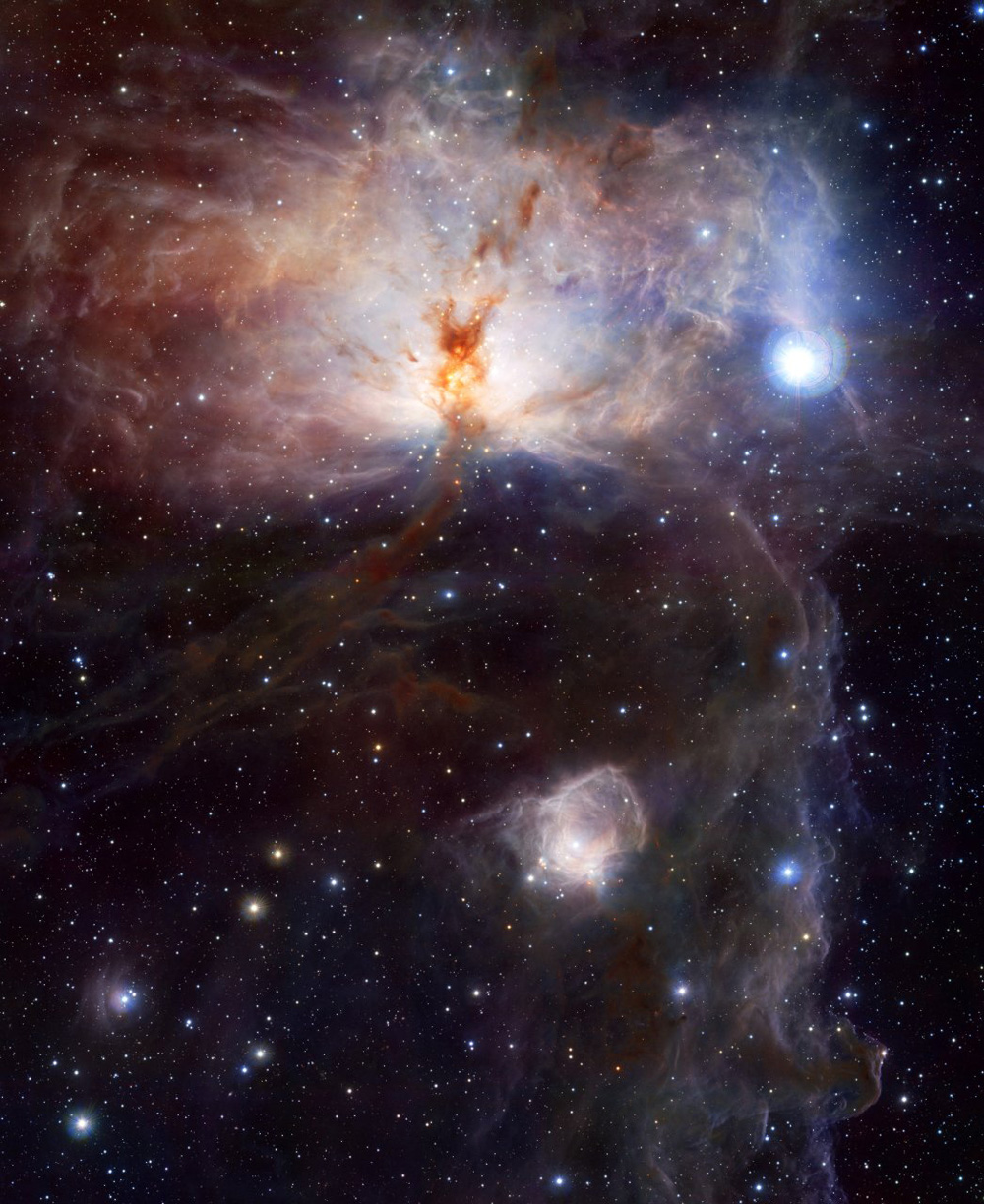First Photos by VISTA Telescope Are Stunning

Whena new telescope comes online, astronomers are excited to see the first images.In the case of the VISTA observatory, they have every right to be excited.
Thefirst images from VISTA (the Visible and Infrared Survey Telescope forAstronomy) rival the most striking photos of the cosmos taken from anyobservatory. A new view of the Flame Nebula is the most stunning, and adetailed look at stars and dust toward the middle of the Milky Way ain't halfbad, either.
Thenew telescope is part of the European Southern Observatory's ParanalObservatory in the Atacama Desert of northern Chile.
?VISTAis a unique addition to ESO?s observatory on Cerro Paranal. It will play apioneering role in surveying the southern sky at infrared wavelengths and willfind many interesting targets for further study by the Very Large Telescope,ALMA and the future European Extremely Large Telescope,? said Tim de Zeeuw, theESO Director General.
Atthe heart of VISTA is a 3-ton camera containing 16 special detectors sensitiveto infrared light, with a combined total of 67 million pixels, ESO officialsexplained in a statement Friday. Observing at wavelengths longer than thosevisible with the human eye allows VISTA to study objects that are otherwiseimpossible to see in visible light because they are either too cool, obscuredby dust clouds or because they are so far away that their light has beenstretched beyond the visible range by the expansion of the universe.
BecauseVISTA is a large telescope that also has a large field of view it can bothdetect faint sources and also cover wide areas of sky quickly.
EachVISTA image captures a section of sky covering about ten times the area of thefull moon and it will be able to detect and catalogue objects over the wholesouthern sky with a sensitivity that is 40 times greater than that achievedwith earlier infrared sky surveys. This is comparable to the step insensitivity from the unaided eye to Galileo?s first telescope, officials said,and VISTA is expected to "reveal vast numbers of new objects and allow thecreation of far more complete inventories of rare and exotic objects in the southernsky."
Breaking space news, the latest updates on rocket launches, skywatching events and more!

Space.com is the premier source of space exploration, innovation and astronomy news, chronicling (and celebrating) humanity's ongoing expansion across the final frontier. Originally founded in 1999, Space.com is, and always has been, the passion of writers and editors who are space fans and also trained journalists. Our current news team consists of Editor-in-Chief Tariq Malik; Editor Hanneke Weitering, Senior Space Writer Mike Wall; Senior Writer Meghan Bartels; Senior Writer Chelsea Gohd, Senior Writer Tereza Pultarova and Staff Writer Alexander Cox, focusing on e-commerce. Senior Producer Steve Spaleta oversees our space videos, with Diana Whitcroft as our Social Media Editor.
